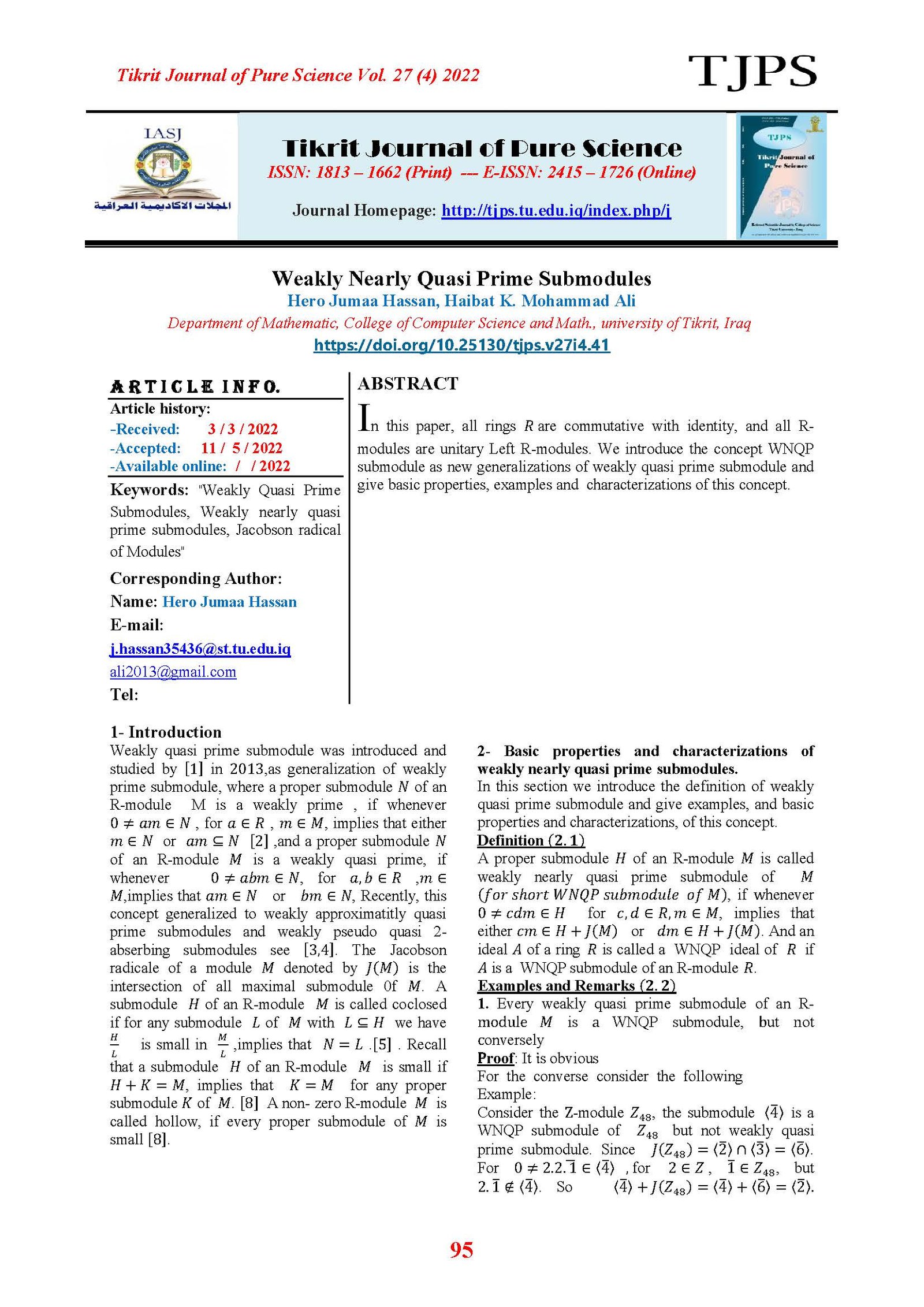Weakly Nearly Quasi Prime Submodules
Main Article Content
Abstract
In this paper, all rings are commutative with identity, and all R-modules are unitary Left R-modules. We introduce the concept WNQP submodule as new generalizations of weakly quasi prime submodule and give basic properties, examples and characterizations of this concept.
Article Details

This work is licensed under a Creative Commons Attribution 4.0 International License.
Tikrit Journal of Pure Science is licensed under the Creative Commons Attribution 4.0 International License, which allows users to copy, create extracts, abstracts, and new works from the article, alter and revise the article, and make commercial use of the article (including reuse and/or resale of the article by commercial entities), provided the user gives appropriate credit (with a link to the formal publication through the relevant DOI), provides a link to the license, indicates if changes were made, and the licensor is not represented as endorsing the use made of the work. The authors hold the copyright for their published work on the Tikrit J. Pure Sci. website, while Tikrit J. Pure Sci. is responsible for appreciate citation of their work, which is released under CC-BY-4.0, enabling the unrestricted use, distribution, and reproduction of an article in any medium, provided that the original work is properly cited.
References
[1] Barbooty, W. K., (2013), “Weakly Quasi Prime Modules and Weakly Quasi Prime Submodules”, M. Sc. Thesis, University of Tikrit.
[2] Behboody, M.and Kooli, H., (2004), “Weakly Prime Module”, Vietnam Journal of Math., Vol. (32), No. (2), pp. (185-195).
[3] Haibat, K. M. and Mahmod, S. J., (2020), “WAPP-Quasi Prime Submodule and Some Related concepts” , Ibn Al- Haitham Journal for Pure and APP,Sci. 34(2),pp. (56-69).
[4] Haibat, K. M. and Radeef, S. A., (2020), “WPQ-2-Absorbing Submodules and Related concepts”, Journal of Al-Qadsiyah for Computer Sci., and Math. 12 (2), pp. (87-96).
[5] Payman, M. H., (2005), “Hollow Modules and Semi hollow Modules”, M. Sc. Thesis, university of Baghdad.
[6] Goodearl, K. R., (1976), “Ring Theory, Non Singular Rings and Modules”, Marcell Dekker, New Yourk.
[7] Kasch, F., (1982), “Modules and rings”, Academic press, London.
[8] Dung, N. V., Huynh, D. V., Simth, P. I. and Wishbauer, R., (1994), “Extending Modules”, Pitman Research Notes in Math. Sci., Longman.
[9] Anderson, F. W. and Fuller, K. F., (1992), “Rings and Categories of Modules”, Springer Verlag New Yourk
